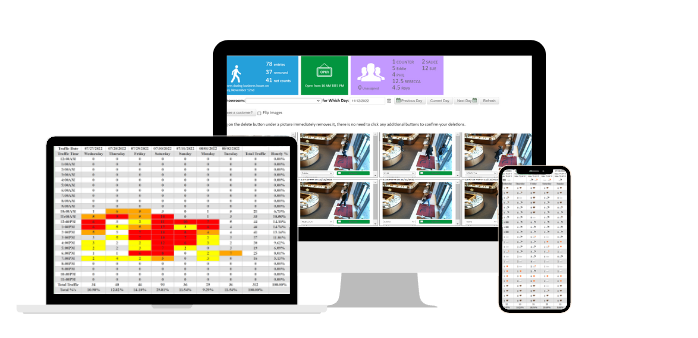In the dynamic world of retail, keeping up with the latest trends is essential for businesses to thrive. While technology continues to shape the industry, one critical aspect that demands attention is counting and monitoring customer foot traffic. In this blog post, we will explore current retail trends and explain why it is more important than ever to focus on tracking and analyzing customer foot traffic.
The Rise of E-commerce:
E-commerce has experienced an unprecedented surge in recent years, and its growth was further accelerated by the COVID-19 pandemic. As online shopping becomes increasingly popular, retailers need to adapt their strategies to stay competitive. However, this does not diminish the importance of physical stores. By closely monitoring foot traffic, retailers can gather valuable insights that help them optimize store layouts, merchandising, and staffing to enhance the overall shopping experience.
Customer Experience Optimization:
Retailers are placing greater emphasis on enhancing the customer experience. The in-store experience plays a pivotal role in attracting and retaining customers. By counting and monitoring foot traffic, retailers gain insights into peak shopping hours, popular sections of the store, and customer flow patterns. Armed with this data, retailers can make informed decisions about staff allocation, optimize product placement, and improve store layouts to create a seamless and enjoyable shopping journey.
Personalization and Targeted Marketing:
In the era of data-driven decision-making, customer insights have become invaluable for retail success. Monitoring foot traffic enables retailers to collect demographic data, such as age and gender, and understand customer preferences. By leveraging this information, retailers can personalize marketing campaigns, tailor promotions, and optimize inventory to cater to their target audience effectively.
Store Performance Analysis:
Counting and monitoring customer foot traffic allows retailers to evaluate the performance of their stores. By analyzing foot traffic patterns over time, retailers can identify trends, make data-backed predictions, and measure the success of marketing initiatives. This data-driven approach helps retailers identify areas for improvement, make informed decisions about store expansions or closures, and allocate resources effectively to maximize profitability.
Competitive Advantage:
In today’s fiercely competitive retail landscape, gaining a competitive edge is crucial. Counting and monitoring foot traffic provides retailers with actionable data that can inform strategic decision-making. By identifying peak shopping times, retailers can schedule staff accordingly, preventing understaffing or overstaffing situations. Moreover, tracking foot traffic in relation to conversion rates helps retailers measure the effectiveness of marketing campaigns and identify areas where customer engagement can be improved, thus enhancing their competitive advantage.
Conclusion:
As the retail industry evolves, businesses must adapt to changing consumer preferences and behaviors. While e-commerce continues to grow, monitoring customer foot traffic in physical stores remains vital for retailers seeking success. By embracing the latest retail trends and investing in accurate foot traffic counting and monitoring solutions, businesses can gain valuable insights to optimize operations, improve the customer experience, and stay ahead in an increasingly competitive market.
Click Here to Learn About the Trax People Counter



